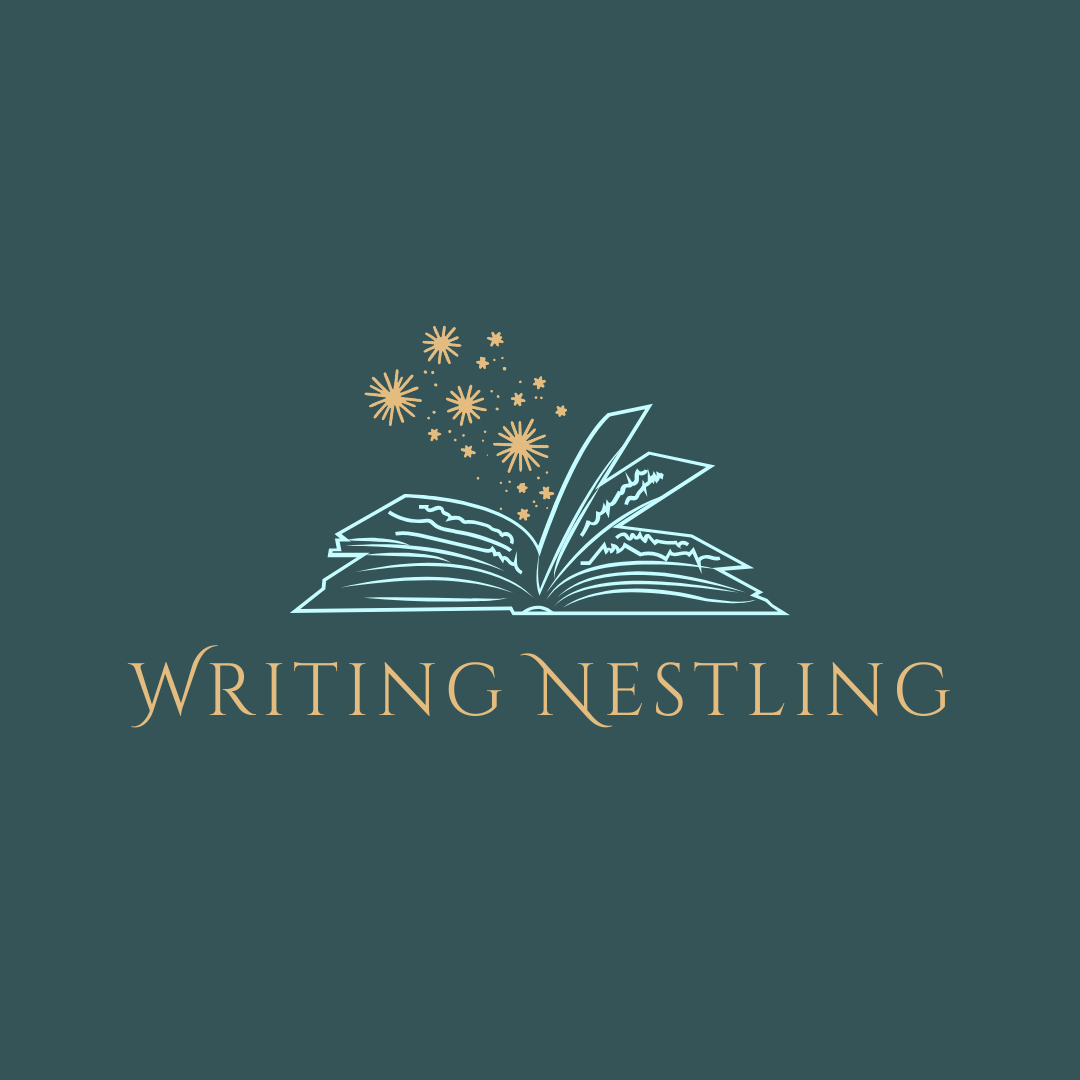How to Come up With Interesting Story Ideas (10 Best Steps)
How to Come up With Interesting Story Ideas
How to Come up With Interesting Story Ideas: In the vast realm of storytelling, the quest for compelling narratives begins with the spark of an idea. Yet, for many writers, summoning that elusive muse can be a daunting endeavor.
How does one conjure the threads of imagination into a tapestry of gripping tales? The art of generating interesting story ideas is a captivating journey, where creativity intertwines with curiosity and observation.
It’s about learning to navigate the labyrinth of the mind, where inspiration lies hidden beneath layers of everyday experiences and untapped potential.
In this guide, we will embark on an exploration of techniques and strategies to awaken the dormant storyteller within, unraveling the mysteries of creativity to unlock a treasure trove of captivating story ideas.
So, let us embark on this odyssey of imagination, where each turn of phrase and flicker of inspiration leads us closer to the heart of storytelling brilliance.
How to Come up With Interesting Story Ideas
Here’s a step-by-step process on How to Come up With Interesting Story Ideas:
Brainstorming
Start by setting aside time to brainstorm. Allow your mind to wander freely without judgment. Write down any ideas that come to mind, even if they seem silly or unrelated at first.
Identify Themes or Topics
Think about themes or topics that interest you or that you’re passionate about. This could be anything from love and friendship to technology or historical events.
Research and Inspiration
Research topics that intrigue you further. Explore books, articles, documentaries, or personal experiences related to these themes. Draw inspiration from real-life events, people, or places.
Explore What If Scenarios
Imagine “what if” scenarios related to your chosen themes or topics. What if the world was ruled by animals? What if time travel were possible? Asking these questions can spark unique story ideas.
Character Development
Create compelling characters that will drive your story forward. Consider their backgrounds, motivations, flaws, and goals. Think about how they might interact with each other and the world around them.
Conflict and Resolution
Every good story needs conflict. Identify obstacles or challenges your characters might face and how they will overcome them. This could be internal struggles, external threats, or moral dilemmas.
Setting and Atmosphere
Choose a setting that enhances your story and contributes to its mood and atmosphere. Whether it’s a futuristic city, a haunted house, or a small-town diner, the setting should feel vivid and immersive.
Plot Development
Develop a clear plot structure that includes a beginning, middle, and end. Outline key plot points, twists, and turning points that will keep readers engaged and invested in the story.
Add Depth and Complexity
Consider adding layers of complexity to your story through subplots, symbolism, or moral ambiguity. This can add depth and richness to your narrative, making it more compelling and thought-provoking.
Feedback and Revision
Share your story ideas with others and solicit feedback. This could be from friends, family, or writing groups. Use their feedback to refine and improve your ideas, and don’t be afraid to revise and iterate as needed.
By following these steps, you can generate a wide range of interesting story ideas and develop them into compelling narratives. Remember to stay open-minded and embrace the creative process!

Understanding Inspiration
Understanding inspiration is akin to embarking on a thrilling treasure hunt through the labyrinth of your own mind.
It’s about excavating the hidden gems buried beneath layers of everyday monotony and societal noise. Inspiration lurks in the forgotten corners of your imagination, waiting patiently to be unearthed by the curious explorer within you.
It dances in the whispers of wind, in the colors of a sunset, and in the laughter of strangers passing by. To grasp inspiration is to embrace the world with wide-eyed wonder, to savor every moment as a potential spark that ignites the flames of creativity.
It’s about daring to venture beyond the confines of convention, to wander through the wilderness of your thoughts with courage and curiosity as your guides. So, let your senses be your compass, and let the journey of inspiration lead you to the stories waiting to be told.
Exploring Your Interests
Exploring your interests is akin to embarking on a thrilling voyage into the depths of your soul. It’s about delving into the passions and curiosities that ignite the fire within, guiding you towards discovery and self-realization.
Whether it’s the enchanting realms of fantasy literature, the pulsating rhythms of jazz music, or the intricate strokes of impressionist art, your interests serve as windows into your unique essence.
They beckon you to immerse yourself fully, to unravel the mysteries they hold, and to find inspiration in their boundless depths.
Through exploration, you not only cultivate a deeper understanding of yourself but also uncover a wealth of potential story ideas waiting to be born from the fertile soil of your imagination.
So, heed the call of your interests, for within their embrace lies the key to unlocking a world of creative possibility.
Observing the World Around You
Observing the world around you is akin to opening a door to a vast and endlessly fascinating universe. It’s about tuning in to the symphony of life playing out in every moment, from the flutter of a butterfly’s wings to the bustling energy of a city street.
Each interaction, each scene, holds within it a treasure trove of inspiration waiting to be discovered. Whether it’s the way sunlight dances upon the surface of a lake or the intricate patterns of shadows cast by towering skyscrapers, the world offers an infinite canvas upon which to paint your stories.
By honing your powers of observation, you sharpen your ability to notice the nuances, the quirks, and the hidden stories that lie just beneath the surface.
So, embrace the art of observation, for within its embrace lies the key to unlocking a wealth of creative riches that await your exploration.
Tapping into Emotions and Experiences
Tapping into emotions and experiences is akin to diving into the deep ocean of human existence, where every wave carries a story and every current whispers a secret.
It’s about delving into the rich tapestry of our own lives and the lives of those around us, mining the raw material of joy, sorrow, love, and fear that courses through our veins.
Our experiences shape us, leaving indelible imprints on our souls, and by embracing them, we unlock a reservoir of authenticity that infuses our stories with depth and resonance.
Whether it’s the bittersweet pang of nostalgia evoked by a childhood memory or the heart-wrenching ache of loss, our emotions serve as both compass and catalyst, guiding us towards truths that resonate with universal human experience.
So, dare to feel deeply, to embrace the full spectrum of emotions, for within the crucible of our own hearts lies the alchemy of storytelling at its most potent and profound.
Brainstorming Techniques
Brainstorming techniques are the artisanal tools of the creative mind, akin to a master chef crafting a gourmet meal from a pantry of diverse ingredients.
It’s about unleashing the tempest of ideas swirling within, letting them collide and coalesce into something greater than the sum of their parts.
From the intricate dance of mind mapping, where concepts bloom like flowers in a wild garden, to the uninhibited frenzy of freewriting, where words flow like a river rushing towards the sea of imagination, each technique offers a gateway to boundless creativity.
Idea journals serve as the sacred scrolls where inklings and inspirations are immortalized, waiting to be resurrected and refined.
So, don your explorer’s hat and set sail into the uncharted territory of your own mind, for within the labyrinth of brainstorming lies the treasure trove of story ideas waiting to be unearthed.
Engaging with Different Perspectives
Engaging with different perspectives is akin to donning a kaleidoscope of masks, each revealing a new facet of the human experience.
It’s about stepping into the shoes of another, traversing the landscape of their thoughts, emotions, and dreams.
From the intricate tapestry of a character’s psyche to the panoramic vista of diverse cultural landscapes, each perspective offers a window into worlds unknown.
By immersing ourselves in the kaleidoscope of humanity, we expand our horizons, challenging our preconceptions and enriching our understanding of the world.
So, let us embrace the mosaic of perspectives that surround us, for within their diversity lies the infinite palette from which we paint the canvas of our stories.

Character Exploration
Character exploration is akin to a thrilling archaeological expedition into the depths of the human soul. It’s about delving beyond the surface of a character’s traits and motivations, excavating the layers of complexity that shape their identity.
Through this process, characters cease to be mere figments of imagination; they become living, breathing entities with hopes, fears, and desires as intricate as our own.
Whether unraveling the enigma of a reluctant hero burdened by past regrets or charting the transformation of a villain consumed by ambition, each character holds within them a universe of potential waiting to be discovered.
By immersing ourselves in their inner worlds, we forge connections that transcend the boundaries of fiction, touching upon the timeless truths that bind us all. So, let us embark on this odyssey of character exploration, for within the labyrinth of their hearts lies the key to unlocking the essence of storytelling itself.
Point of View Experimentation
Point of view experimentation is akin to donning a chameleon’s cloak, allowing writers to shapeshift and morph their narrative landscapes with each shift in perspective.
It’s about navigating the labyrinth of storytelling possibilities, from the intimate confines of first-person narration to the panoramic vistas of omniscient observation.
Through this dynamic exploration, writers transcend the limitations of a single viewpoint, embracing the multifaceted nature of human experience.
Whether immersing readers in the raw immediacy of a protagonist’s inner monologue or weaving a tapestry of interconnected lives from the omniscient heights, each point of view offers a unique lens through which to interpret and inhabit the story world.
By daring to experiment with different perspectives, writers invite readers on a transformative journey, challenging them to see the familiar through fresh eyes and discover the hidden depths within.
So, let us embark on this voyage of point of view experimentation, for within the kaleidoscope of narrative voices lies the boundless potential to craft stories that resonate with universal truths.
Research and Conceptualization
Research and conceptualization are the dynamic duo of the writer’s arsenal, akin to the architect’s blueprint and the explorer’s map combined.
It’s about embarking on an exhilarating quest for knowledge, traversing the vast terrain of human understanding to unearth the hidden gems of inspiration.
Whether delving into the annals of history to breathe life into a bygone era or venturing into the uncharted realms of science to craft speculative futures, each endeavor enriches the tapestry of storytelling with layers of authenticity and depth.
Research is not merely about gathering facts; it’s about immersing oneself in the intricacies of a subject, absorbing its essence until it becomes a part of one’s creative DNA.
Conceptualization, on the other hand, is the alchemical process of transmuting raw knowledge into the gold of narrative innovation, weaving together threads of imagination to construct worlds that captivate and inspire.
So, let us embark on this grand adventure of research and conceptualization, for within its embrace lies the power to transform the ordinary into the extraordinary and craft stories that endure through the ages.
Gathering Information
Gathering information is akin to embarking on a thrilling expedition through the corridors of knowledge, where each step leads to the discovery of hidden treasures waiting to be unearthed.
It’s about casting a wide net, delving into the vast ocean of resources available, from dusty tomes in forgotten libraries to the boundless expanse of the internet’s digital archives.
Whether poring over scholarly articles to glean insights into the mysteries of the cosmos or conducting interviews to capture the nuances of human experience, each piece of information serves as a building block in the construction of a rich and immersive narrative landscape.
Through meticulous research, writers breathe life into their stories, infusing them with the authenticity and depth that captivate readers’ imaginations.
So, let us venture forth with curiosity as our compass, for within the labyrinth of information lies the key to unlocking the wonders of storytelling.
Blending Reality with Imagination
Blending reality with imagination is akin to weaving a tapestry where threads of truth intertwine seamlessly with strands of fantasy, creating a vivid mosaic of storytelling brilliance.
It’s about navigating the delicate balance between the tangible and the intangible, infusing the mundane world with the magic of creative vision.
Whether crafting a historical epic that breathes new life into long-forgotten tales or conjuring fantastical realms where dragons soar and sorcerers wield ancient magics, each stroke of the imagination transforms reality into a canvas upon which dreams take flight.
Through this alchemy of creation, writers transcend the boundaries of the ordinary, inviting readers on a journey where the familiar merges with the fantastical to ignite the flames of wonder and awe.
So, let us embrace the boundless potential of blending reality with imagination, for within its embrace lies the power to craft stories that transcend the confines of the everyday and soar to heights unknown.

Finding Conflict and Tension
Finding conflict and tension is akin to unearthing buried treasure within the narrative landscape, where every obstacle and clash serves as a gem that adds sparkle to the story’s crown.
It’s about delving deep into the hearts of characters, mining their desires and fears, and uncovering the raw emotions that drive them forward.
Whether it’s the simmering tension between star-crossed lovers, the clash of ideals between protagonist and antagonist, or the internal struggle of a character wrestling with their own demons, conflict and tension are the crucibles in which characters are forged and stories come to life.
Like a master sculptor chiseling away at marble to reveal the hidden beauty within, writers mold conflict and tension into the sinew that gives their narratives strength and depth.
So, let us embrace the tumultuous currents of conflict and tension, for within their turbulent waters lies the power to captivate readers’ hearts and minds, keeping them eagerly turning pages until the very end.
Experimenting with Genre and Style
Experimenting with genre and style is akin to embarking on a thrilling journey through literary dimensions yet unexplored, where each twist and turn reveals new vistas of storytelling possibility.
It’s about pushing the boundaries of convention, daring to blend the hues of different genres into a kaleidoscope of narrative innovation.
Whether concocting a spellbinding fusion of science fiction and romance, or weaving a tapestry of mystery interwoven with elements of magical realism, each experiment in genre and style breathes fresh life into the age-old art of storytelling.
Like a master chef concocting a gourmet dish from a fusion of flavors, writers blend the ingredients of genre and style with finesse, crafting narratives that tantalize the senses and defy expectations.
So, let us embrace the exhilarating adventure of experimentation, for within its boundless playground lies the potential to create stories that resonate with readers long after the final page is turned.
Genre Exploration
Genre exploration is akin to setting sail on a vast ocean of storytelling possibilities, where each genre serves as a distant island waiting to be discovered and explored.
It’s about charting a course through the diverse landscapes of literature, from the enchanting realms of fantasy to the gritty streets of noir, and uncovering the unique treasures that each genre holds.
Whether immersing oneself in the pulse-pounding action of a thriller or unraveling the intricate mysteries of a detective novel, genre exploration offers writers the opportunity to stretch their creative muscles and hone their craft.
Like an intrepid explorer venturing into uncharted territory, writers navigate the currents of genre with curiosity and courage, unearthing hidden gems of inspiration along the way.
So, let us hoist the sails of imagination and embark on this grand adventure of genre exploration, for within its uncharted waters lies the promise of limitless storytelling riches waiting to be discovered.
Stylistic Techniques
Stylistic techniques are the artist’s brushstrokes on the canvas of literature, each stroke imbuing the narrative with its own unique flavor and texture.
It’s about mastering the tools of language to craft prose that dances off the page, leaving an indelible imprint on the reader’s mind. From the lyrical cadence of poetic language to the razor-sharp precision of minimalist prose, stylistic techniques offer writers a rich palette from which to paint their stories.
Whether employing vivid imagery to evoke a sense of place or playing with syntax to create rhythm and flow, each technique serves to enhance the reader’s experience, drawing them deeper into the world of the story.
Like a virtuoso musician composing a symphony of words, writers harness the power of stylistic techniques to elicit emotion, provoke thought, and transport readers to realms beyond the bounds of reality.
So, let us embrace the alchemy of language and unleash the full potential of stylistic techniques, for within their artful execution lies the power to captivate hearts and minds alike.
Collaboration and Feedback
Collaboration and feedback are the dynamic engines propelling the literary journey, transforming solitary endeavors into communal triumphs.
It’s about embracing the synergy of creative minds, where each participant adds a unique hue to the vibrant tapestry of storytelling.
Like a symphony of voices harmonizing in perfect unity, collaboration cultivates an atmosphere of shared inspiration and mutual growth.
Whether engaging in spirited debates with fellow writers or seeking guidance from trusted mentors, feedback becomes the compass guiding writers through the labyrinth of revision and refinement.
Each critique, each suggestion, is a precious gem, polishing the rough edges of a manuscript until it gleams with brilliance.
Through collaboration and feedback, writers transcend the boundaries of individual vision, forging connections that enrich their craft and elevate their stories to new heights. So, let us embrace the power of collaboration and feedback, for within their embrace lies the alchemy that transforms words into magic.
Overcoming Creative Blocks
Overcoming creative blocks is akin to navigating through a labyrinthine maze with only a flickering torch to light the way. It’s about embracing the shadows of doubt and uncertainty, and finding the courage to forge ahead in pursuit of inspiration.
Like a phoenix rising from the ashes, creativity often emerges from the depths of adversity, fueled by resilience and determination.
Whether facing the daunting blank page or grappling with the relentless whisper of self-doubt, creative blocks serve as the crucible in which innovation is forged.
Through tenacity and perseverance, writers learn to dance with their demons, transforming obstacles into stepping stones on the path to artistic triumph.
So, let us embrace the challenge of overcoming creative blocks, for within the darkness lies the spark that ignites the flames of creativity, illuminating the way to new horizons of imagination.
Frequently Asked Questions (FAQ) about How to Come up With Interesting Story Ideas:
Where do I begin when trying to come up with story ideas?
Start by exploring your own passions, interests, and experiences. Often, the best stories emerge from the things that resonate deeply with you.
How can I overcome writer’s block and find inspiration?
Experiment with different brainstorming techniques, such as mind mapping, freewriting, and idea journals. Sometimes, stepping away from your work and engaging in unrelated activities can also spark new ideas.
Is it better to stick to one genre or explore multiple genres when brainstorming story ideas?
Both approaches have their merits. Sticking to one genre allows for a deeper exploration of its conventions and tropes, while exploring multiple genres can lead to innovative and unexpected story ideas.
How can I make sure my story ideas are unique and original?
Draw inspiration from a variety of sources, including literature, history, current events, and personal experiences. Put your own twist on familiar tropes and themes to create something fresh and unexpected.
What role does research play in generating story ideas?
Research can provide a wealth of inspiration by uncovering fascinating facts, historical events, and cultural nuances that can serve as the foundation for compelling stories. Don’t be afraid to dive deep into research to add authenticity and depth to your ideas.
How important is it to seek feedback on my story ideas?
Feedback is invaluable in refining and shaping your ideas. Share your ideas with trusted friends, fellow writers, or writing groups to gain fresh perspectives and identify areas for improvement.
What should I do if I feel overwhelmed by the number of story ideas I have?
Take a step back and prioritize your ideas based on your interests, goals, and vision for your writing. Focus on developing one idea at a time, and trust your instincts to guide you in choosing the most promising ones to pursue further.
Conclusion
In the grand tapestry of storytelling on How to Come up With Interesting Story Ideas, the journey of conjuring captivating story ideas is both an art and a science, an alchemical process that blends creativity, curiosity, and perseverance.
From the depths of our own experiences to the boundless realms of imagination, the wellspring of inspiration knows no bounds.
As we traverse the landscapes of our minds, armed with the tools of exploration and the wisdom of practice, we unlock the doorways to endless possibilities.
Each flicker of inspiration, each spark of creativity, is a beacon guiding us along the path of storytelling brilliance.
So, let us embrace the adventure of discovery, knowing that within the labyrinth of our own minds lies the power to craft tales that resonate, inspire, and endure through the ages.






